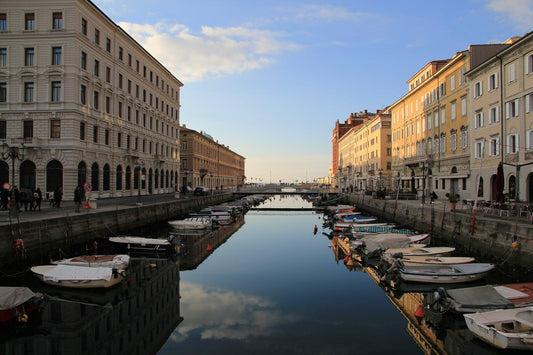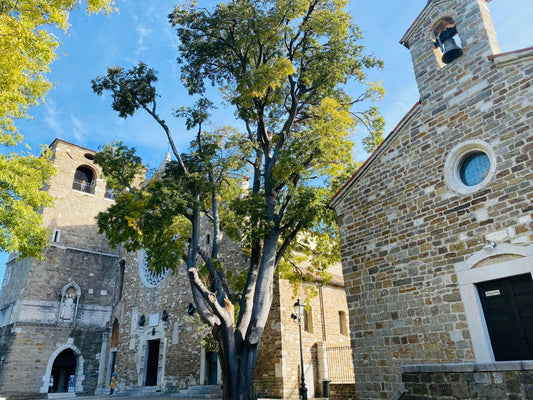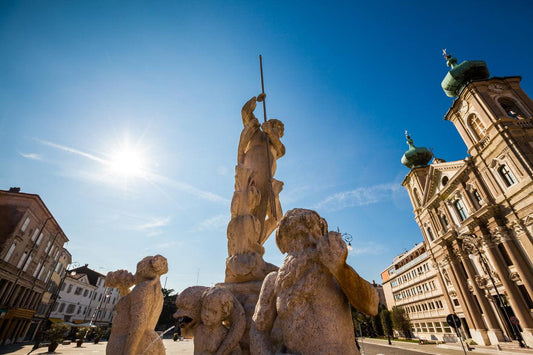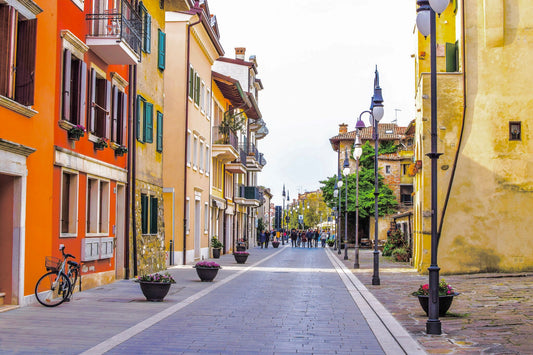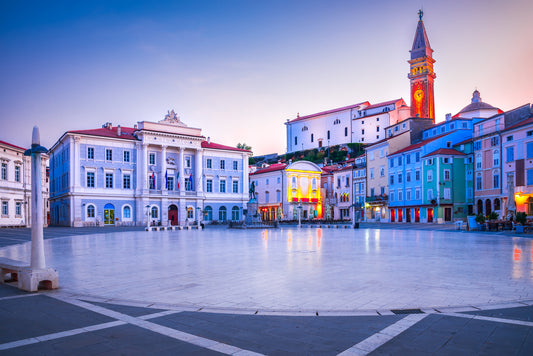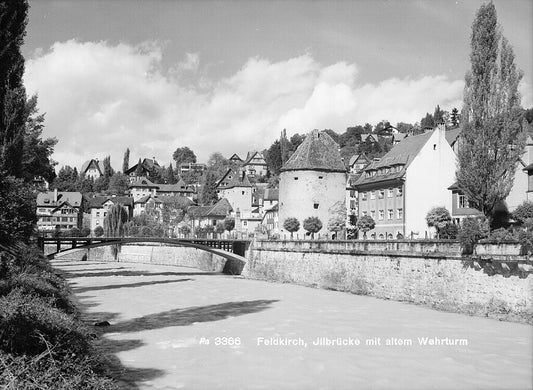
What you absolutely must see in Lisbon!
Share
In addition to the ixpiritour - the self-guided city tour from ixpirity, we'll give you a few more tips on sights in Lisbon!
Lisbon, the city of seven hills, enchanting light and vibrant history, invites you to embark on a very special journey of discovery!
Recommendations at a glance:
- Digital city rally as a self-guided city tour through Lisbon
- Pink Street
- Time Out Market
- Elevador de Santa Justa - Lisbon's historic elevator
- Take tram line 28 (Eléctrico 28)
- Chiada: Livraria Bertrand – The oldest bookstore in the world
- Chiada: Café A Brasileira
- A few language tips 😉
Digital city rally & self-guided city tour Lisbon
Immerse yourself in the vibrant streets of Alfama on a self-guided tour, enjoy breathtaking views from historic miradouros and let yourself be enchanted by the stories of the past.
Whether with family, friends or alone – the self-guided tour combines exciting puzzles with fascinating insider tips and historical highlights .
Experience Lisbon intensely, flexibly, and in your own way as you discover the city's soul and create unforgettable moments. Pack your curiosity, lace up your shoes, and start your adventure in one of Europe's most fascinating cities!

And if you'd like to explore even more, here are the coolest tips:
Pink Street

Pink Street, formerly a notorious red-light district , has transformed in recent years into one of Lisbon's trendiest and most vibrant nightlife hotspots. Named for the striking pink asphalt that partially covers Rua Nova do Carvalho , this street is now a symbol of creativity, joie de vivre, and urban renewal.
The Cais do Sodré district used to be rather seedy, characterized by brothels, bars, and shady characters. Thanks to targeted urban development measures, Pink Street has been transformed into a vibrant promenade with modern bars, restaurants, art galleries, and street art . The colorful facades, brightly colored umbrellas suspended over the street, and the pulsating evening atmosphere attract visitors from all over the world.
Pink Street has been named one of Europe's 12 most popular streets by the New York Times and is a particularly popular meeting place for young people and night owls. During the day, the street is quieter and offers opportunities to photograph its colorful urban art, but it's at night that it truly comes alive with live music, cocktail bars, and dancing.
Pink Street is about 200 meters long and definitely worth a visit!
Time Out Market - Mercado da Ribeira

The Time Out Market in Lisbon, also known as Mercado da Ribeira is one of the city's most popular culinary and cultural attractions. The historic market hall building originally opened in 1882 and served for decades as the central market for fresh produce and fish. In the early 21st century, the market declined in importance and fell into disrepair.
In May 2014, the west wing of the market hall was opened as Time Out Market Lisbon Newly opened – an innovative food court and meeting place that brings together some of Lisbon's best restaurants, bars, and culinary concepts under one roof. Time Out experts carefully selected more than 30 stalls offering traditional Portuguese specialties such as Pastéis de Nata , Bacalhau (Cod), grilled sardines and international dishes.
Several well-known Michelin-starred chefs run their own restaurants here.
The market offers approximately 700 seats with open seating, allowing visitors to sample a variety of dishes while still enjoying each other's company. In addition to excellent cuisine, it also hosts cultural events, a cooking academy, and exhibitions. Since its opening, the Time Out Market has been a culinary hotspot for locals and tourists alike, blending modernity and tradition in a vibrant atmosphere.
Opening hours: Daily 10:00 to 24:00
Location: Avenida 24 de Julho, right next to the train station Cais do Sodré in the lively Lisbon district.
Elevador de Santa Justa - Lisbon's historic elevator
The Elevador de Santa Justa, also known as the Elevador do Carmo, is an impressive neo-Gothic structure made of steel and cast iron in the heart of Lisbon. This 45-meter-high public elevator was designed by Raoul Mesnier de Ponsard and completed in 1902. Ponsard was a student of Gustave Eiffel, which explains the striking architectural similarities to the Eiffel Tower in Paris.
The Elevador was originally conceived as a practical solution to Lisbon's steep elevation changes, connecting the Baixa district (lower town) with the higher-lying districts of Chiado and Bairro Alto . It was initially powered by a steam engine that pumped water into tanks beneath the cabins – the heavier a tank became, the higher it lifted the cabin opposite. In 1907, the system was converted to electric motors.
The structure consists of a cast-iron tower with two original wooden cabins , each equipped with glass panes, mirrors, and brass fittings, and accommodating 24 people. The elevator overcomes a height difference of 45 meters and is connected to Largo do Carmo via a 25-meter-long metal walkway.
The observation platform at the top of the tower , accessible via a spiral staircase, is particularly spectacular. From there, visitors can enjoy a breathtaking panoramic view of the red roofs of the Baixa district, the Castelo de São Jorge, the Tagus River, Rossio Square, and the surrounding neighborhoods. On the way to the platform, visitors can see the two original engine-driven motors.
The Santa Justa Lift is now integrated into the Carris public transport network as line 54E and is a listed historical monument . It is one of Lisbon's most popular tourist attractions, often resulting in long queues. The lift symbolizes industrial progress around 1900 and embodies the steampunk flair of a bygone era in the heart of the modern city.
Take tram line 28 (Eléctrico 28)
You absolutely must take this line! It uniquely combines history, culture and nostalgia, as it has been running almost unchanged on the same route and with the same wooden carriages that are still in use today since the 1930s.
The line opened in 1914 and is part of the historic tram network, which once comprised 27 lines. Today, only a few lines remain in operation, but line 28 has cult status: over its 7-kilometer length, it climbs extreme gradients of up to 14%, winds through narrow, cobbled streets, and connects some of the city's most beautiful neighborhoods, such as Graça, Alfama, Baixa, Chiado, Bairro Alto, and Campo de Ourique.
The yellow and white trams date back to the 1930s, are made of wood and metal, and are still braked manually – sometimes with sand sprinkled onto the rails on inclines to prevent slipping. Each tram offers around 20 seats and 38 standing places. The ride feels like a journey back in time, as the tram rattles through the old town, past charming facades, churches, and viewpoints.
Tips:
- Starting point: Martin Moniz
- Final destination: Campo de Ourique (Prazeres)
- Duration & Pace: The journey takes about an hour – sometimes longer if the tight curves and pedestrians slow the tram down.
- Time of day: It's best to travel in the morning before 9 am or in the late afternoon to avoid long waiting times.
The journey on the Eléctrico 28 is more than just a connection from A to B – it is a symbol of Lisbon itself: loud, charming, somewhat chaotic, but full of history and passion.
Here's the cheapest way to get your ticket for the Eléctrico 28:
1. Directly at Carris or buy from vending machines:
- Ride with the driver: €3.20 (pay in cash)
- Navegante Card (rechargeable card, available everywhere): €1.85 per trip
-
24-hour day ticket: €6.80 (valid for tram, metro, bus and elevators)
Sales at Metro ticket machines or in Carris shops at Praça da Figueira or Martim Moniz .
2. Use the Lisboa Card if you want to visit several attractions:
- Unlimited use of tram, metro, bus and train (also to Sintra or Cascais)
- Free entry to museums and discounts at attractions
- Price: from €22 for 24 hours
Available online at: Lisboa Card on Tiqets or GetYourGuide .
Livraria Bertrand – The oldest bookstore in the world
In the heart of the Chiado district lies a true cultural institution: the Livraria Bertrand , the oldest still operating bookstore in the world, located at Rua Garrett 73–75, 1200-203 Lisbon
The Livraria Bertrand was 1732 from Pedro Faure founded and ten years later by the French bookseller Pierre Bertrand It was taken over. It quickly became a meeting place for intellectuals, writers, and philosophers who exchanged ideas and discussed books there. After the devastating Earthquake of 1755 The bookstore temporarily moved into the chapel. Nossa Senhora das Necessidades , however, returned to its present location in 1773. Rua Garrett back.
Bertrand was appointed in 2011 by Guinness World Records Officially recognized as the " oldest still-active bookstore in the world ," it now belongs to the publishing group. Porto Editora and operates over 50 branches in Portugal – but the headquarters in Chiado has remained the heart of Portugal's literary life.
The bookstore extends over Seven interconnected rooms , each named after a Portuguese author. Visitors stroll through narrow corridors filled with books, old wooden shelves, and stucco ceilings – each room tells its own little literary story.
At the end of the gallery is the Café Bertrand opened in 2017 to celebrate the bookstore's 285th anniversary. Here, you can browse literary classics while enjoying coffee and pastries. A mural by the artist... Tamara Alves honors Fernando Pessoa – probably the most famous Portuguese poet, who was often a guest in Chiado and also the nearby Café A Brasileira visited.
Livraria Bertrand is more than a bookstore – it is a living piece of Portuguese history and a symbol of the country's deep literary tradition. Countless writers have been guests in its seven rooms, including Fernando Pessoa, José Saramago, Eça de Queirós, and Alexandre Herculano.
Readings, book presentations and discussions take place regularly; however, the atmosphere remains calm and inviting – ideal for children, families and literature lovers.
Café A Brasileira
Here in Chiada you should definitely treat yourself to a coffee:
Café A Brasileira in Lisbon is an iconic institution deeply rooted in the city's culture and history. It was founded in 1905 by Adriano Telles , a Portuguese merchant who traded coffee in Brazil and wanted to introduce his Brazilian coffee to Portugal. With its distinctive Art Nouveau interior , ornate ceiling paintings, dark wood paneling, and elegant marble decorations, the café exudes the charm of the Belle Époque .
The café quickly became a meeting place for many famous Portuguese personalities, including the legendary poet Fernando Pessoa, who is honored today with a bronze statue in front of the café.
Rua Garrett, where the café is located, is the heart of the Chiado artists' quarter, where literature, art and intellectual exchange blend harmoniously.
The café is also famous as the birthplace of the "Bica," the typical Portuguese espresso variant that originated here. Café A Brasileira offers traditional Portuguese coffee specialties, excellent pastries such as Pastéis de Nata, and an atmosphere that immerses visitors in the vibrant intellectual world of the early 20th century.
Today it is a popular destination for tourists and locals alike who want to enjoy coffee in a relaxed and culturally rich environment. The café retains its historical character while remaining a vibrant center for culture and community.
A few language tips

Here is a short Portuguese language course with the most important phrases, pronunciation and pronunciation rules:
Basic greetings:
- Bom dia (Good morning) – pronounced: bong dee-a
- Boa tarde (Good day/afternoon) – pronounced: bwa tar-dje
- Boa noite (Good evening/night) – pronounced: bwa noj-te
Polite phrases:
- Por favor (Please) – por favor
- Obrigada (Thank you, if you are female) – o-bri-ga-da
- Obrigado (Thank you, if you are male) – o-bri-ga-do
- De nada (You're welcome) – dschi na-da
- Desculpa (sorry, informal) – dschulk-pa
Important questions:
- Como vai? (How are you?) – ku-mu vai
- Onde fica...? (Where is...?) - on-de fi-ka
- Quanto custa? (How much does it cost?) – kwan-tu kus-ta
Pronunciation rules:
- The “ão” sounds roughly like “aung” with a nasal tone, e.g. obrigada = [o-bri-ga-da].
- The letter “ç” is pronounced like “s”, e.g. por favor = [por fa-vor].
- The "r" at the beginning of a word sounds more like the German "h", e.g. rapid (“quickly”) = há-pee-do .
- Nasal sounds, e.g. "ão", are regularly pronounced nasally.


